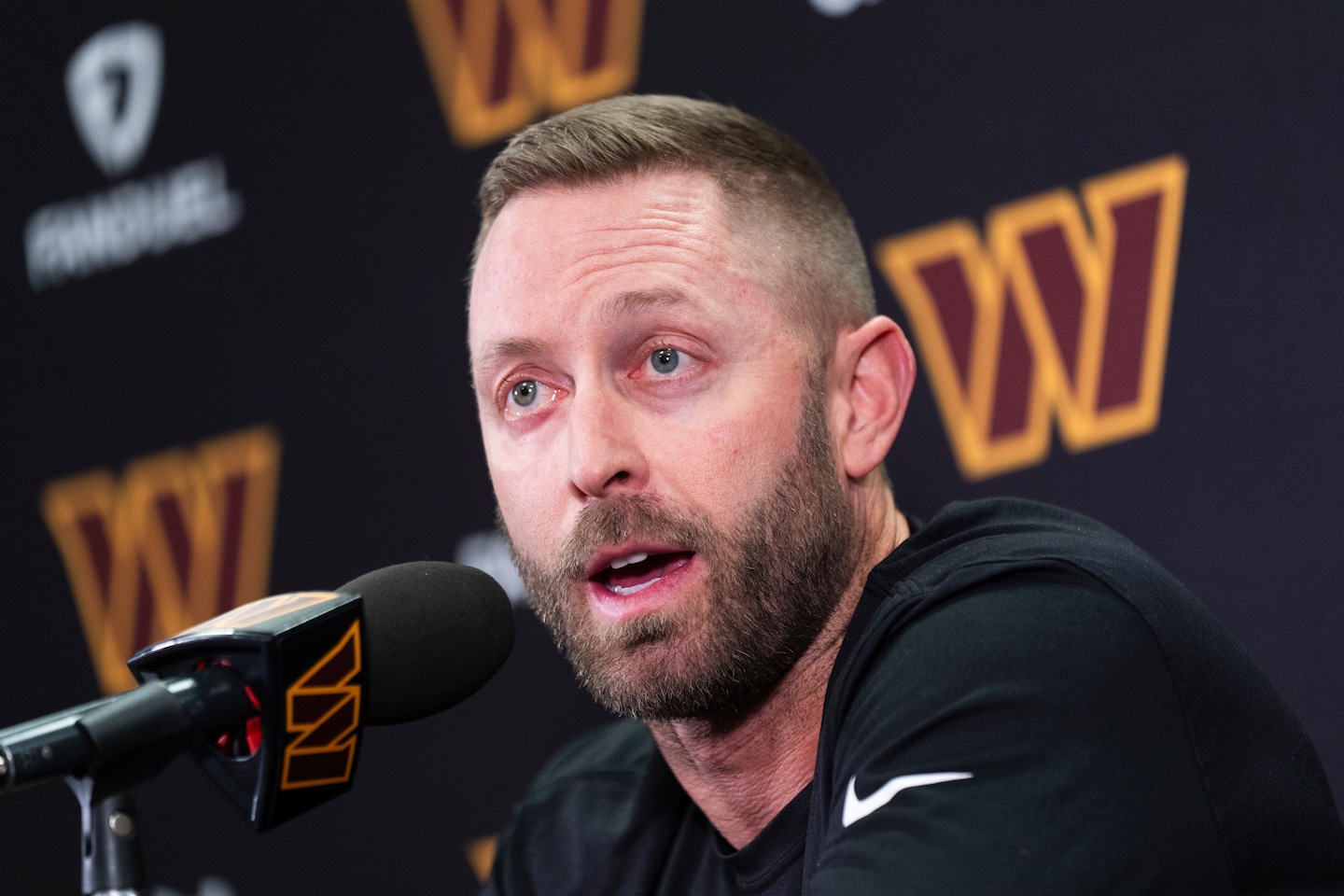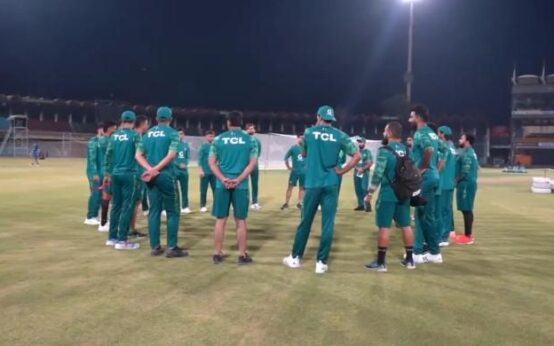So far, one of the only things clear is what it’s not: the “Air Raid,” the pass-heavy, shotgun-based scheme offensive coordinator Kliff Kingsbury came up in.
Kingsbury said he “wouldn’t categorize anything we do under that name.” Offensive line coach Bobby Johnson said some of the stuff Kingsbury ran with the Arizona Cardinals “doesn’t look like Air Raid.” Quarterbacks coach Tavita Pritchard said it’s “super reductive if you say, ‘Kliff is Air Raid.’ ”
“We want to be balanced,” Kingsbury said. “We want to be able to run the football and play-action pass and really do whatever it takes to win.”
But whatever the label, it’s hard to imagine Kingsbury will radically depart from the foundations of his past successes. He’ll pass first (though probably not as much as Eric Bieniemy did last season), spread the field, take deep shots and use tempo. He’s likely to feature innovate passing concepts that create space and favorable matchups for playmakers. The questions are how the staff will develop the run game and protection schemes and marry them to the passes.
A lot will depend on the quarterback. Kingsbury said the traits most important to him are work ethic, leadership and mobility, and all top three prospects in the draft — Southern California’s Caleb Williams, North Carolina’s Drake Maye and LSU’s Jayden Daniels — seem to fit the criteria. Kingsbury will fit his ideas to his guy.
“Everybody learns differently. Everybody processes differently, likes different plays, sees the game differently,” he said. “So I really try to get to the bottom of who they are as a person, who they are as a player and build it around them.”
One facet of the offense that may seem niche but is actually important: How much the quarterback lines up under center or in the shotgun. Many offenses at lower levels nearly exclusively use shotgun, and Kingsbury, thanks in part to his Air Raid roots, did, too, with the Cardinals. But it’s harder to use shotgun at such a high rate in the NFL because it puts a lot on the quarterback’s shoulders.
One way to see it is on play-action fakes. Fakes from under center, known as “hard” play action, generally force linebackers to step up to stop the run more aggressively than “soft” fakes from shotgun, which allow linebackers a split-second longer to read the play — which also allows them to stay in passing lanes longer and makes the quarterback’s margin for error smaller.
In January, Fox NFL broadcaster Greg Olsen pointed out one common thread among C.J. Stroud, Jordan Love and Brock Purdy, three young quarterbacks who had success last season: Their offensive coordinators made things easier on them by putting them under center on early downs.
“Shotgun is a critical element to modern offense,” Olsen wrote on X. “Has to be implemented, but the exclusivity of it is very dependent on having the perfect personnel to execute it.”
If Washington drafts a quarterback, he’ll be comfortable in shotgun. Williams, Maye and Daniels all spent more than 90 percent of their college snaps in shotgun, according to TruMedia.
But in the past decade, nearly all young quarterbacks have gone under center more in the NFL. Few coaches used shotgun as much as Kingsbury did in Arizona, with Kyler Murray at quarterback. The only other quarterbacks who played in the shotgun at such a high rate were Lamar Jackson, Jalen Hurts and Anthony Richardson. It’s unclear whether Kingsbury used shotgun at such a high rate because of Murray’s height (5-foot-10), his philosophy or both.
So does Kingsbury, like Olsen, believe getting under center more would help develop a young quarterback, and if he does, how will he do it in the Commanders’ new system?
Brian Johnson, Washington’s new assistant head coach and offensive pass game coordinator, was Philadelphia’s offensive coordinator last season and used shotgun for Hurts on 93 percent of his snaps. Johnson called shotgun vs. under center “a great philosophical question” that “boils down to intent.”
“I do think, for young players, one of the things you’d like to do is make sure that you get them as comfortable as possible as quickly as possible, and there is a comfort level [in shotgun],” he said, adding, “There are very few teams that’re [getting under center] now. I’m not saying there isn’t an advantage to doing that. But there’s definitely a learning curve for somebody that’s never done something to get them comfortable enough to go perform that on a Sunday in the NFL.”
If Kingsbury gets a mobile quarterback and sticks with a shotgun-heavy approach, he could force defenses to respect the quarterback as a runner. Kingsbury could address the weakness of shotgun by using the pistol formation to create a hard play-action fake from shotgun; the approach worked well in Murray’s rookie year but became less consistent over time.
Regardless, quarterback runs seem to be a priority for Kingsbury. When asked why he wanted to work with Bobby Johnson, the new offensive line coach, Kingsbury first pointed to Johnson’s creativity with tempo and the run game in offenses quarterbacked by running threats. Johnson spent time with the Buffalo Bills and New York Giants, coaching lines that blocked for Josh Allen and Daniel Jones.
When free agency opens March 13, Washington will have to start defining its offense. If Kingsbury maintains the mix of personnel groupings he used in Arizona — sets with three receivers, four receivers and two tight ends — then the front office could prioritize a pass-catching tight end and another receiver (as well as offensive linemen, though the market isn’t as strong).
But until then, the Commanders’ coaches will continue studying and shaping an offense they don’t have a label for yet. Less Air Raid, more … hybrid?
“At the end of the day, offensive guys, we want to score points,” Pritchard said. “Like, how do we do that? … We are in those stages [of figuring it out] right now, which is the really cool part. The exciting thing is we’re getting to forge our identity.”


 Best Underground Water Leak Detection Equipment 2024
Best Underground Water Leak Detection Equipment 2024  Best Backyard Ideas: Turn Your Outdoor Area Into a Creative and Calm Haven
Best Backyard Ideas: Turn Your Outdoor Area Into a Creative and Calm Haven  Babar, Rizwan are good players but not whole team, says Mohammad Hafeez
Babar, Rizwan are good players but not whole team, says Mohammad Hafeez  Pak vs NZ: Green Shirts aim to bounce back against Kiwis today
Pak vs NZ: Green Shirts aim to bounce back against Kiwis today